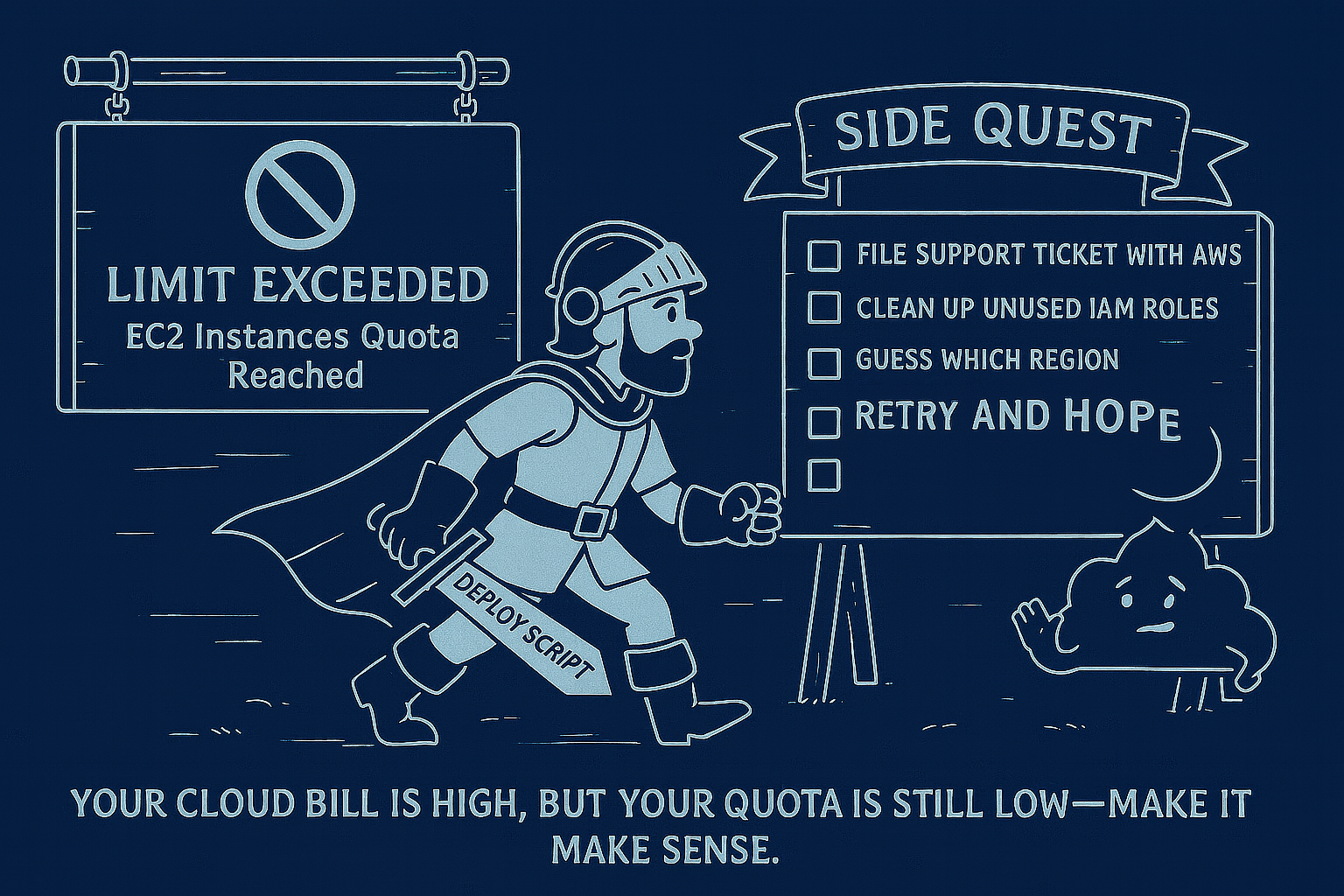
Service Quotas: The Side Quest No One Asked For
Just when everything's going smoothly—CI pipeline green, model training wrapping up, infrastructure-as-code queued to deploy—you hit it:
LimitExceededException: You have reached your limit of EC2 instances.Or maybe it's too many IAM roles. Too many VPCs. Too many of… something. Suddenly, you're no longer shipping code, you're on a quota quest. And unlike most quests, this one doesn't reward you with anything except lost time and a whole lot of context switching.
The Flow Breaker
Cloud quotas are like invisible walls. You don't know they're there until you run full speed into one. And the worst part? They rarely show up at the start of a project. They ambush you in production, or worse, during a live demo (like what happened to me this week 😢).
What starts as "just deploy this new service" becomes:
- File a support ticket
- Dig through old Terraform state to find unused roles or instances
- Set calendar reminders to try again in 24-48 hours
- Start manually cleaning up resources you're afraid to delete
It's the ops equivalent of losing your keys on the way to a job interview.
Why Quotas Exist (and Still Suck)
Yes, yes—we know. Quotas exist for a reason:
- To prevent abuse
- To encourage cost control
- To protect shared infrastructure
But here's the truth: most default quotas are too low to support modern, real-world workloads. Especially in organizations that use multi-account strategies (e.g., dev/stage/prod), ephemeral environments, or orchestrate resources on-demand.
If you're deploying AI/ML workloads, working with serverless pipelines, or running containerized microservices, the quota limits become a bottleneck, not a safeguard.
The True Cost of the Detour
It's not just time lost—it's flow broken. You're deep in a build mindset, and now you're in customer support mode. Meanwhile:
- Engineers are blocked from testing new ideas
- Deployment windows slip
- You're backtracking instead of shipping
And the tooling isn't always helpful. Quota errors can be cryptic. You don't always know which resource is triggering the failure—or if you're even hitting the right quota in the first place.
How to Fight Back
A few things you can do to avoid the dreaded side quest:
Make It Someone Else's Problem
At StarOps, we've hit every wall imaginable—so we built around them. Our orchestration engine checks quota thresholds before triggering a deploy, and integrates with your cloud accounts to surface issues before they become side quests.
Because you should be building product, not filing quota appeals.
Bottom Line
Your cloud bill is high, but your quota is still low—make it make sense.
